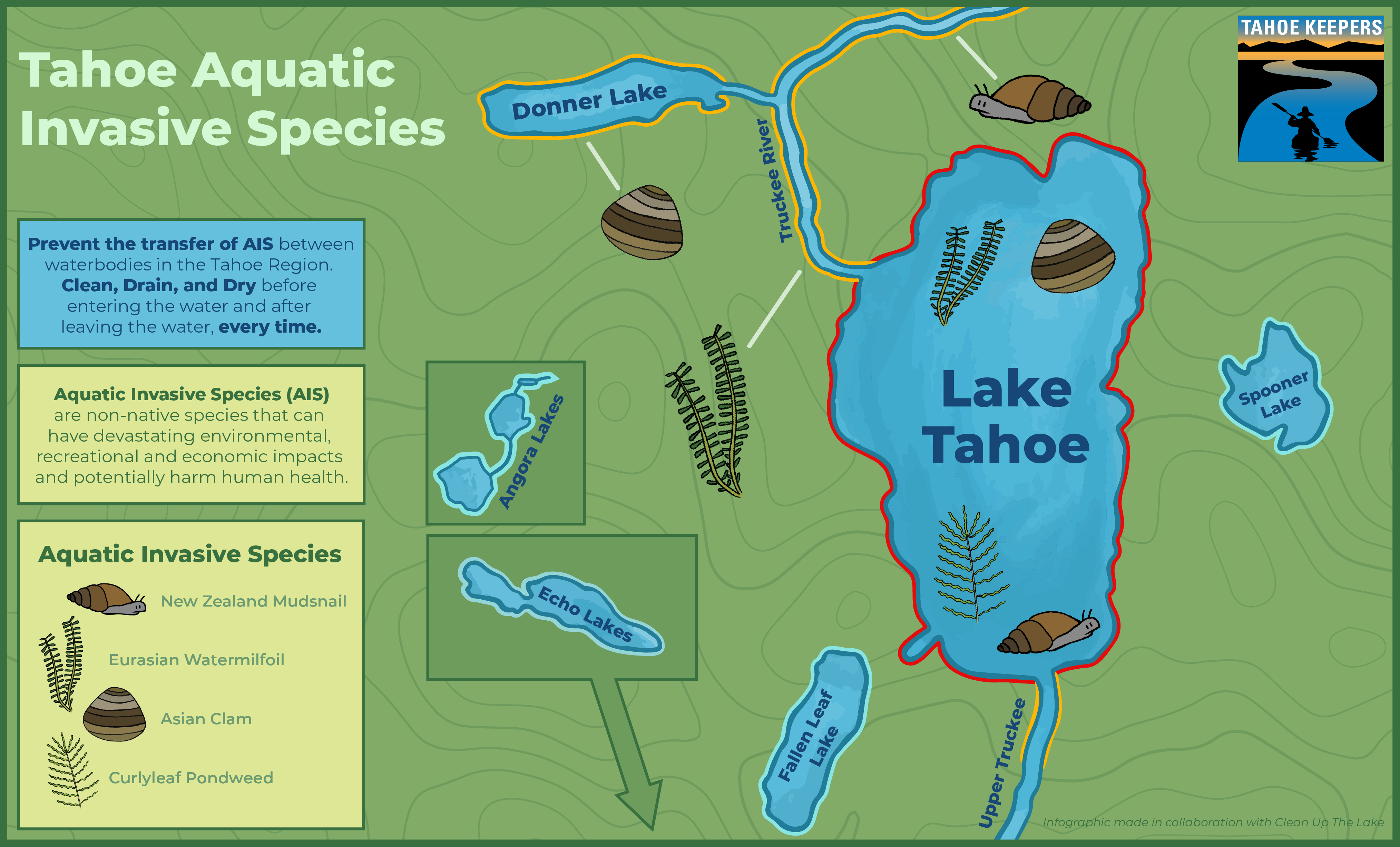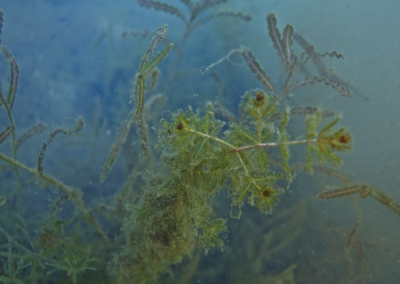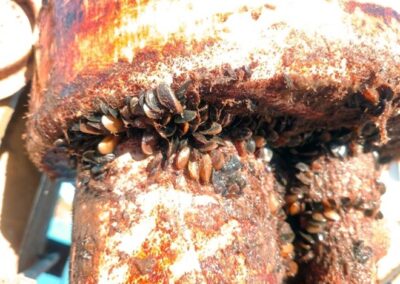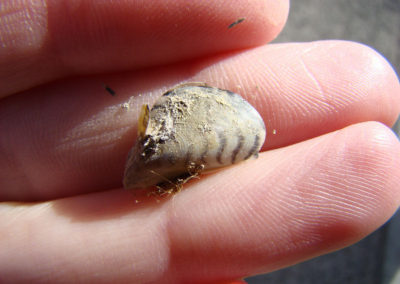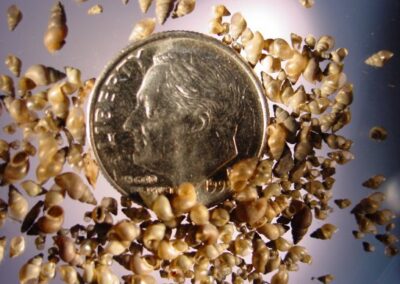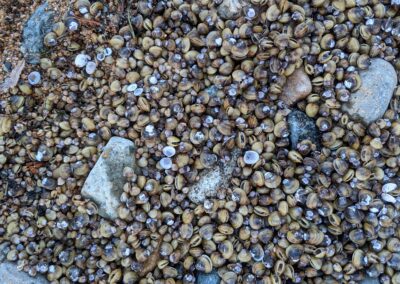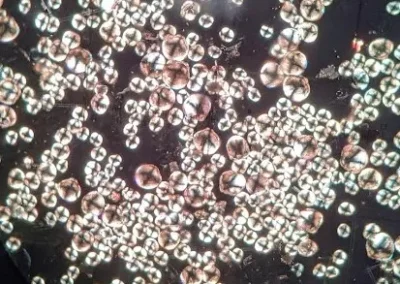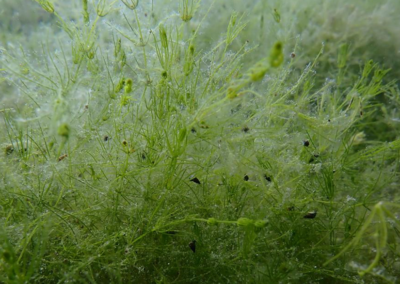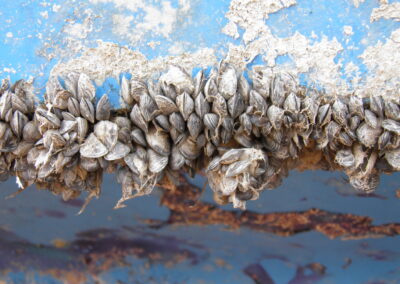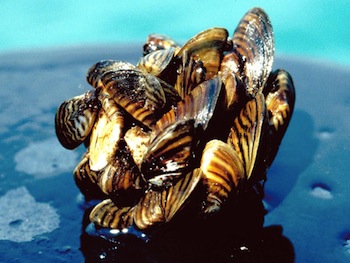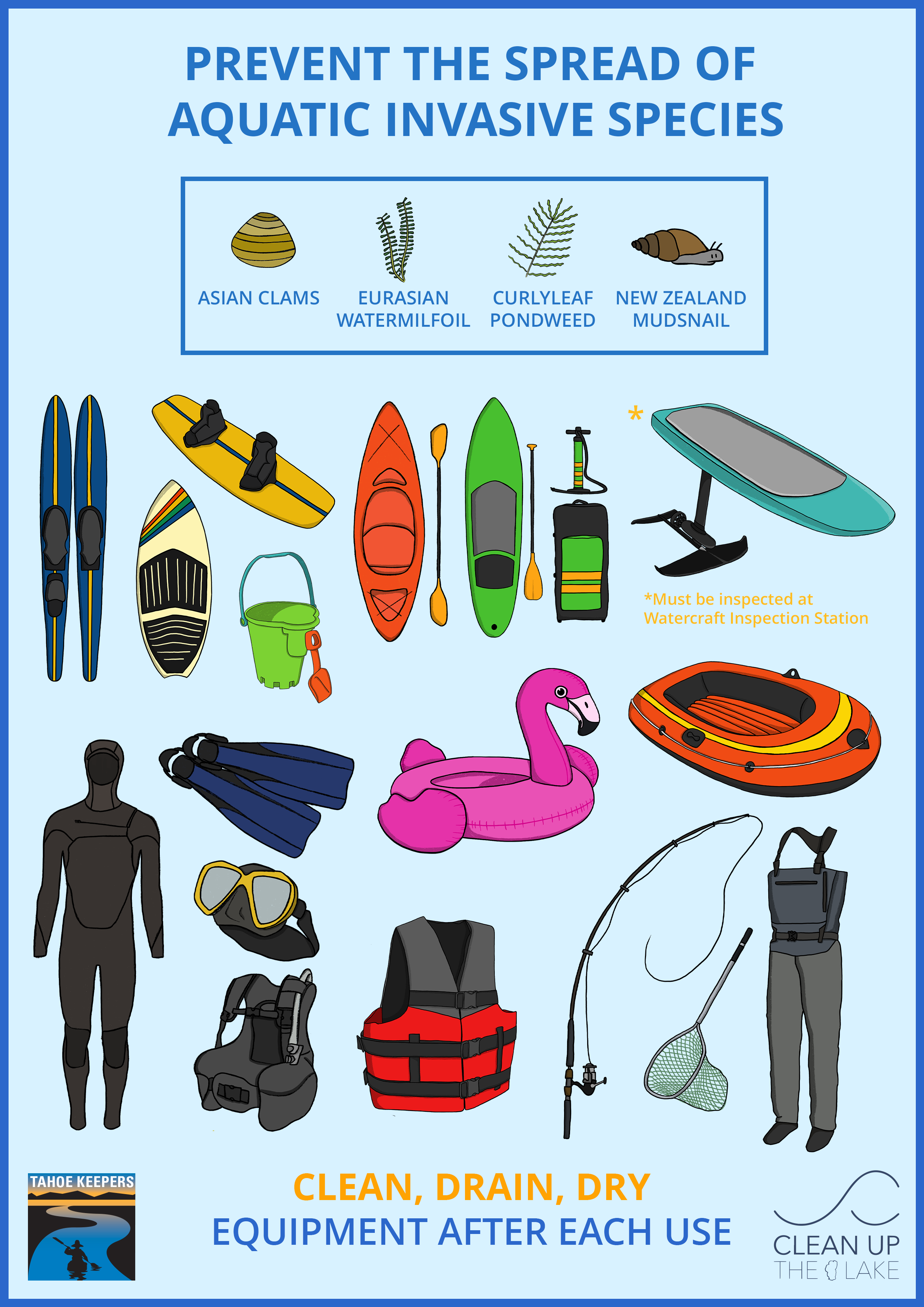Aquatic Invasive Species can irreversibly harm the Lake Tahoe watershed.
About Aquatic Invasive Species
The most serious threats to streams and lakes in the Lake Tahoe Region are zebra, quagga, and golden mussels, and hydrilla. These AIS are not present in Lake Tahoe. Each of these invaders is spread through the transport of water and/or debris that can collect in cockpits and hatches, cling to outer hulls, rudders, and paddles, and even hide out on your gear.
Once AIS are introduced and establish a local population, they are extremely costly to control and often impossible to eradicate. For example, the Lake Mead community spends over $20 million a year to combat their quagga mussel infestation. The prevention of new AIS infestations is more effective and more economical than the control or eradication of an existing infestation.
Threats to Tahoe

Zebra and quagga mussels are spreading rapidly throughout the United States. These species travel between counties and states by attaching to watercraft and gear, which are then transported great distances by car, truck, or trailer. The adults and juvenile mussels will attach to any watercraft stored in contaminated water, and their microscopic young (a.k.a veligers) can survive the journey between waterbodies if there is standing water throughout the trip. Adult mussels cause significant damage to water utilities, recreational facilities, and watercraft because they use a cement-like adhesive to attach and accumulate in catastrophic densities.
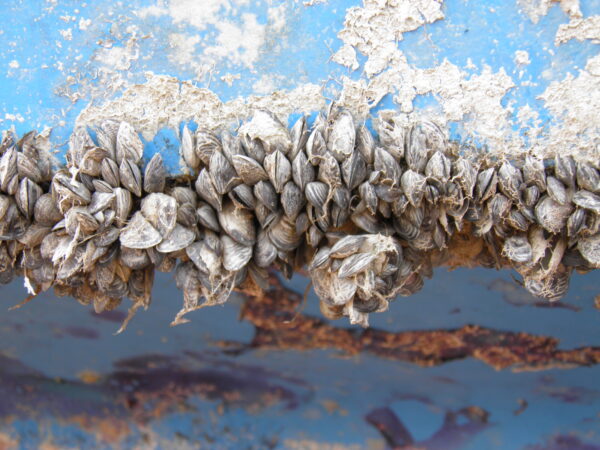
AIS Present in Lake Tahoe
This animal is often transported via clumps of mud and plant fragments stuck to boots, watercraft, or other gear that comes in contact with the water. They can survive up to 7 days in dry conditions and 50 days in damp conditions. Click here for more information regarding the New Zealand mudsnail detection, and how you can prevent the spread.
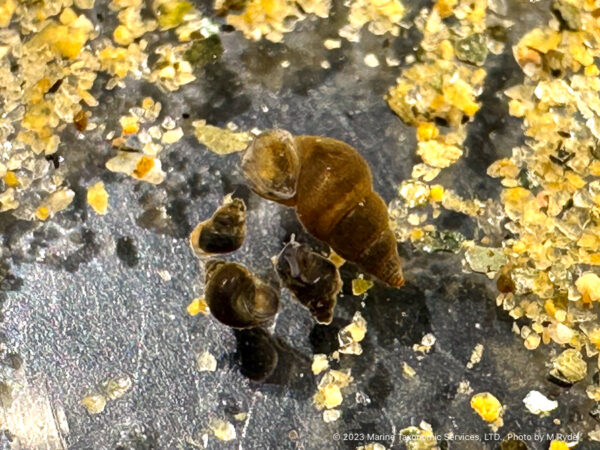
Eurasian watermilfoil threatens the abundant recreational opportunities and natural wonders Lake Tahoe offers. When left unchecked, Eurasian watermilfoil forms thick mats in nearshore areas that alter ecosystems and damage Lake Tahoe’s famous clarity.
Control methods like UV light and bottom barriers have been tested to remove aquatic invasive plant infestations around Lake Tahoe. To learn how to identify this invasive plant, click here.
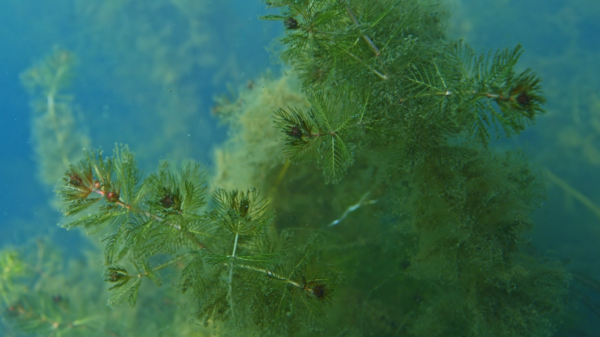
Curlyleaf pondweed can outcompete native plant species and contribute to thick mats in nearshore areas, creating unnatural habitat that allows other non-native species to establish. Thick plant growth hinders recreation and can tangle on rudders, hulls, and paddles.
Control methods like UV light and bottom barriers have been tested to remove aquatic invasive plant infestations around Lake Tahoe. To learn how to identify this invasive plant, click here.
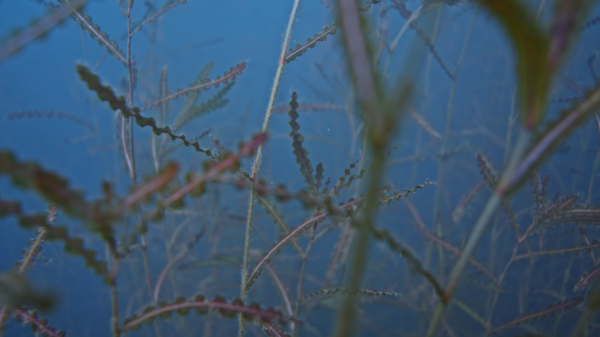
First found in the waters of Lake Tahoe in 2002, populations of Asian clams have rapidly expanded since 2008. Populations of Asian clams are concentrated along the South Shore of Lake Tahoe. Current control methods include using suppression mats to block dissolved oxygen and food from reaching the clams under the lake bottom.
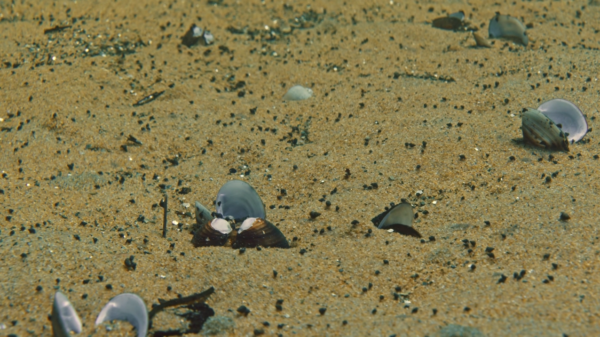
- Asian clam
- Black crappie
- Bluegill sunfish
- Bullhead catfish
- Bullfrog
- Curlyleaf pondweed
- Eurasian watermilfoil
- Largemouth bass
- New Zealand mudsnail
- Smallmouth bass
- Signal crayfish
For more information, visit these useful links:
Threats to Tahoe
Golden Mussels
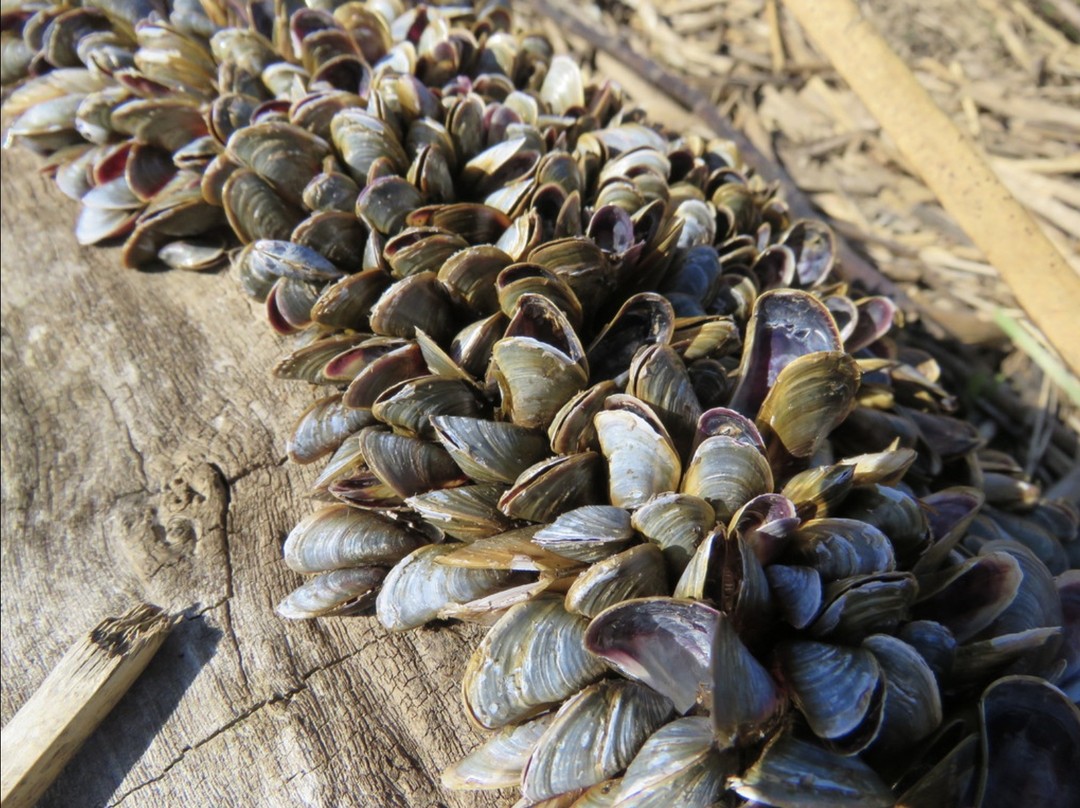
Zebra and Quagga Mussels
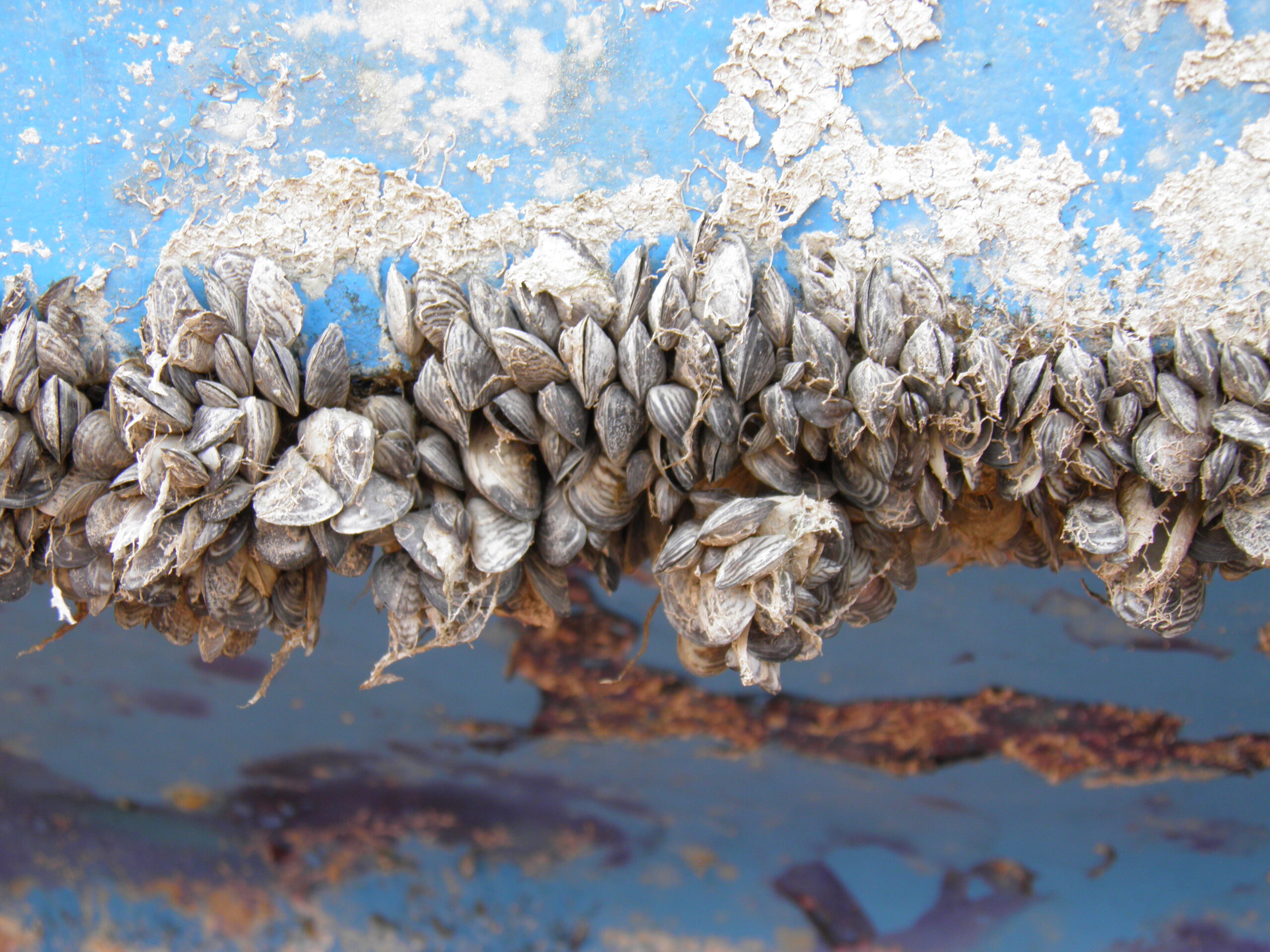
Zebra and quagga mussels are spreading rapidly throughout the United States. These species travel between counties and states by attaching to watercraft and gear, which are then transported great distances by car, truck, or trailer. The adults and juvenile mussels will attach to any watercraft stored in contaminated water, and their microscopic young (a.k.a veligers) can survive the journey between waterbodies if there is standing water throughout the trip. Adult mussels cause significant damage to water utilities, recreational facilities, and watercraft because they use a cement-like adhesive to attach and accumulate in catastrophic densities.
AIS Present in Lake Tahoe
New Zealand Mudsnails

This animal is often transported via clumps of mud and plant fragments stuck to boots, watercraft, or other gear that comes in contact with the water. They can survive up to 7 days in dry conditions and 50 days in damp conditions. Click here for more information regarding the New Zealand mudsnail detection, and how you can prevent the spread.
Eurasian Watermilfoil
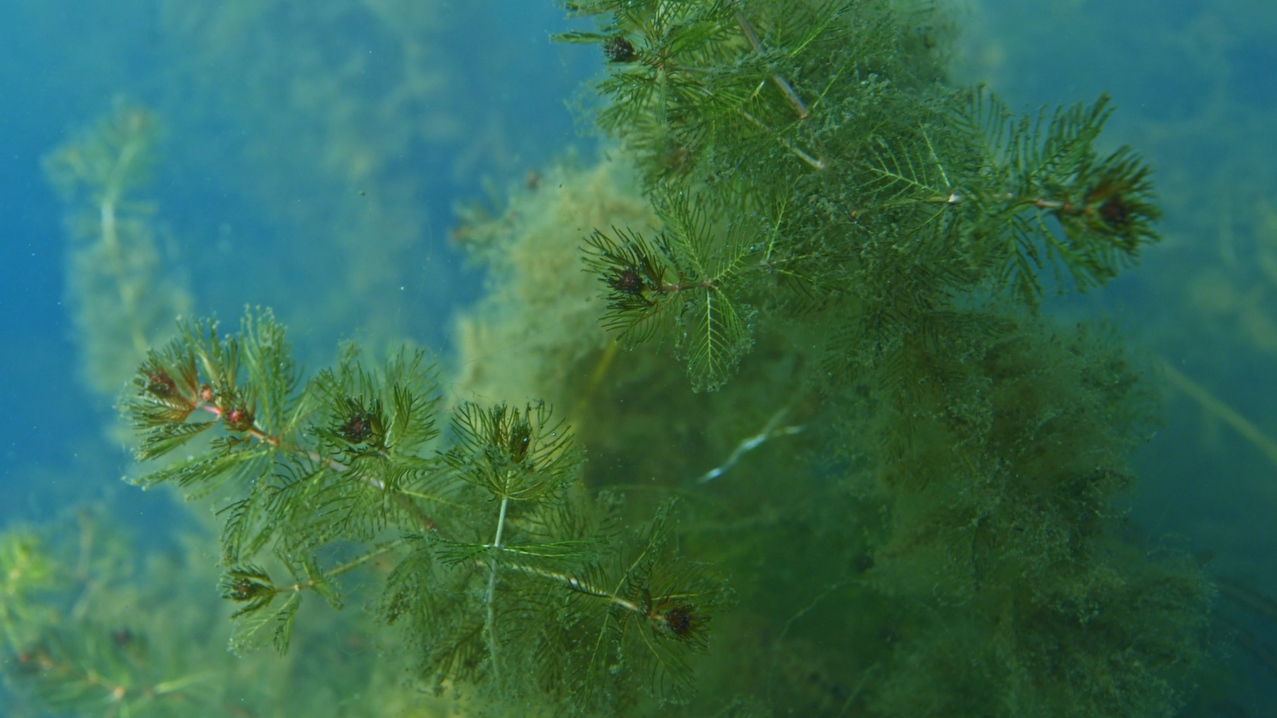
Eurasian watermilfoil threatens the abundant recreational opportunities and natural wonders Lake Tahoe offers. When left unchecked, Eurasian watermilfoil forms thick mats in nearshore areas that alter ecosystems and damage Lake Tahoe’s famous clarity.
Control methods like UV light and bottom barriers have been tested to remove aquatic invasive plant infestations around Lake Tahoe. To learn how to identify this invasive plant, click here.
Curlyleaf pondweed
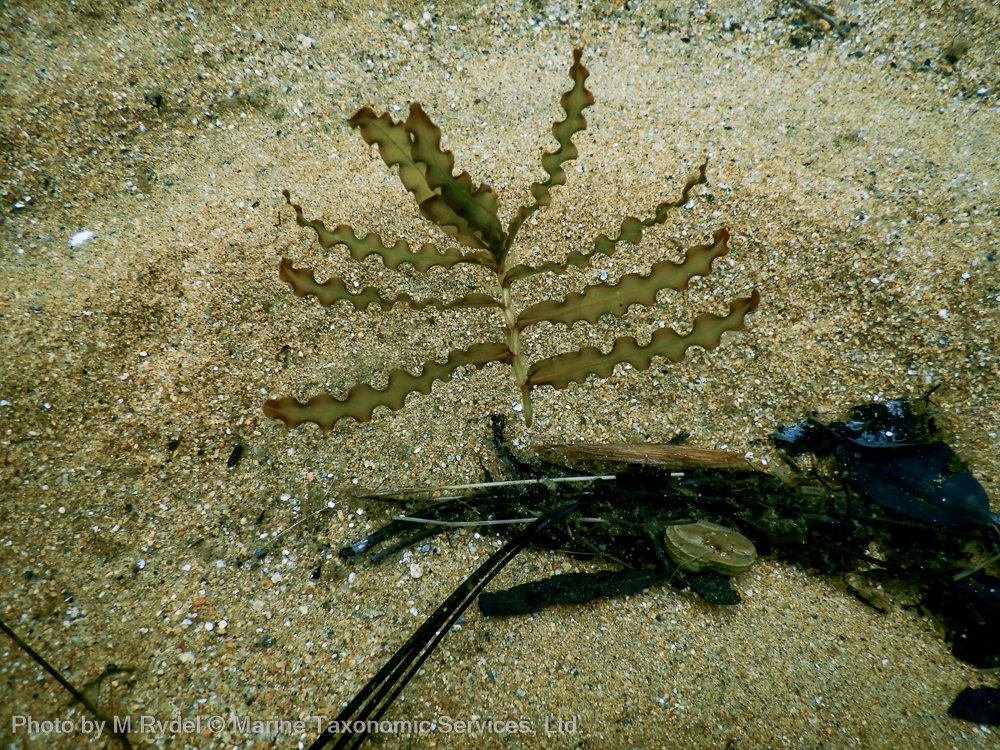
Curlyleaf pondweed can outcompete native plant species and contribute to thick mats in nearshore areas, creating unnatural habitat that allows other non-native species to establish. Thick plant growth hinders recreation and can tangle on rudders, hulls, and paddles.
Control methods like UV light and bottom barriers have been tested to remove aquatic invasive plant infestations around Lake Tahoe. To learn how to identify this invasive plant, click here.
Asian Clams
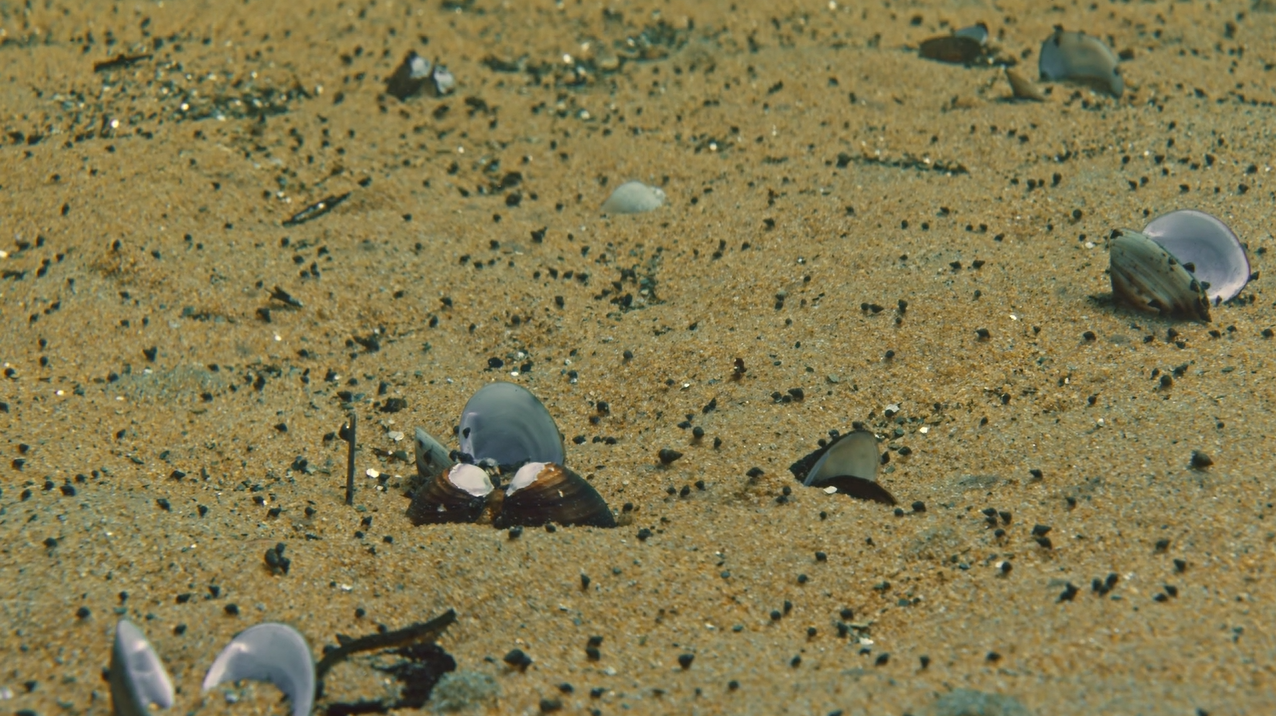
First found in the waters of Lake Tahoe in 2002, populations of Asian clams have rapidly expanded since 2008. Populations of Asian clams are concentrated along the South Shore of Lake Tahoe. Current control methods include using suppression mats to block dissolved oxygen and food from reaching the clams under the lake bottom.
Additional Species
- Black crappie
- Bluegill sunfish
- Bullhead catfish
- Bullfrog
- Largemouth bass
- Smallmouth bass
- Signal crayfish
For more information, visit these useful links:
Protect Lake Tahoe! Clean, Drain, Dry.
Just a few extra minutes can make the difference in protecting your recreation experience.
Protect the entire Tahoe Basin.
